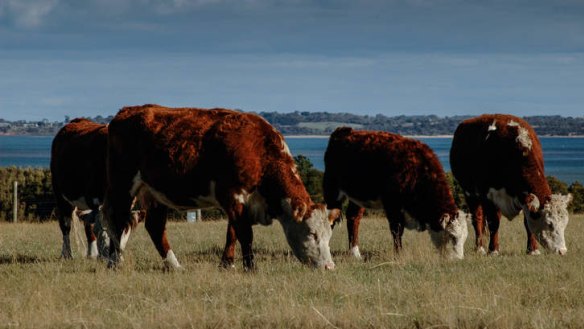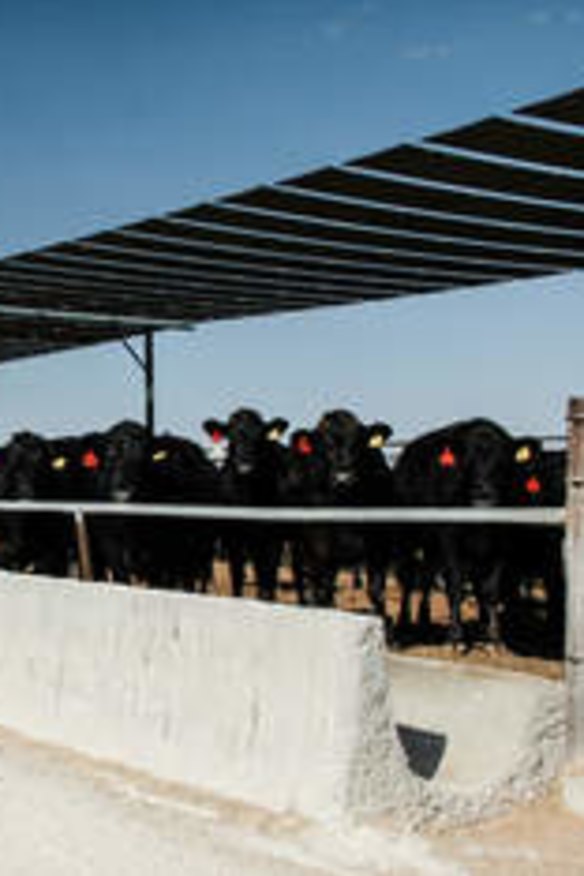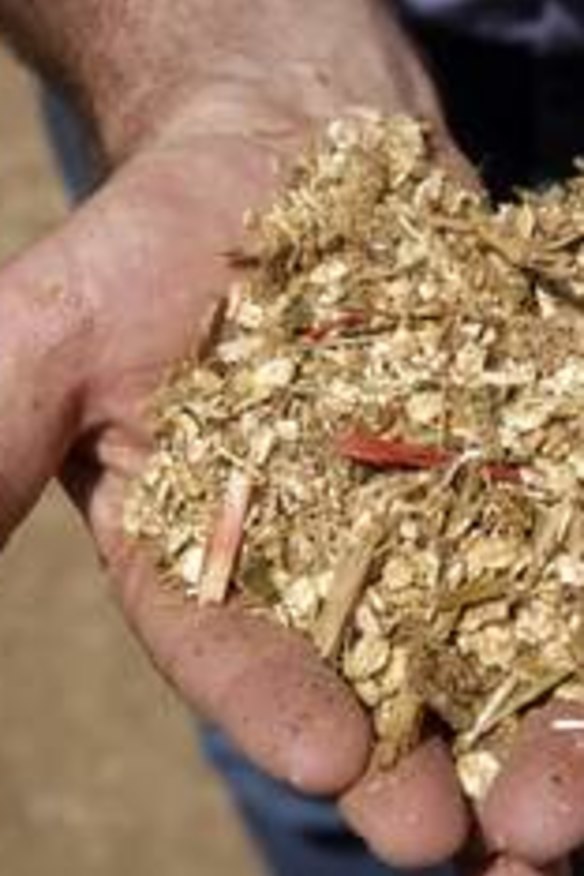So here's my beef with beef
Apart from the emotional response triggered from seeing cattle behaving unnaturally in the feedlot, grain-fed beef tastes too rich compared to its grass-fed counterparts. So why, then, are restaurants still serving it?

A few years back I gave up eating meat from factory-farmed animals after I visited a feedlot. I grew up on a farm and was surrounded by cattle from the day I was born. There is a certain quiet pleasure to be gained watching a cow wrap its tongue around a sheath of grass then move on to the next. When cattle enter a fresh paddock they space themselves apart and slowly move forward as a herd, one mouthful at a time.
The cattle in the feedlot I visited is acknowledged by the beef industry as one of the best in the country, yet to me, the cattle still appeared cramped.The minimum space for cattle in feedlots in Australia is nine square metres per animal. The one I visited was basically a series of concrete floored pens with canopies offering shelter. This was a good feedlot. I have seen others where there is little shelter and a feedlot pad – a five-centimetre layer of compacted manure that is meant to protect the groundwater from unwanted nutrients from urine and faeces. If the pad gets too dry dust can form. That is why feedlots needs dense stocking numbers, to compact the pad and kept it moist – with the cow's own urine.
Cattle feedlots in Australia are not as gruesome as US writer Michael Pollan describesin Omnivore's Dilemma. At the feedlot I visited there was plenty of water and a feed truck drove up and down the rows pumping a feed ration made from a variety of grains and seeds including fermented corn husks and GMO cotton trash. There I found out that cattle in feedlots could have hormone growth promotants implanted under their skin, depending on the need of the client, such as a supermarket, buying group or exporter.

The cattle in this feedlot didn't behave like the cattle I knew. They were locked in pens, quite crowded compared to the way cattle spread themselves out in a paddock. They appeared slow, mopey and uninterested. Cattle, and well handled cattle, are normally inquisitive to newcomers. Quite a number were discharging from their rears.
Depending on the season and the time of the year up to 80 per cent of the cattle slaughtered for beef in Australian supermarkets could have been through feedlots. But you won't find the word feedlot on the sticker. To be "certified grain fed" steers need to have been on a high energy ration for a minimum of 70 days and the heifers 60 days. Cattle destined for the supermarket are "finished" for around seven weeks to gain some extra condition before being slaughtered. Forty per cent of beef consumed in Queensland is certified grain fed, 38 per cent in New South Wales, 28 per cent in Western Australia, 21 per cent in South Australia, 10 per cent in Victoria and 5 per cent in Tasmania. Animals that are grain fed start life in a paddock and are trucked into feedlots for their last few months to fatten.
"Cattle are generally grain fed because the quality of grass at certain times of the year or during poor seasons, such as drought, is such that is doesn't contain enough nutrients for the cattle to grow to required weights," reads a document from Meat and Livestock Australia. The real flavour benefits of grain feeding cattle occur after 100 to 150 days. After this period of time the flesh starts to become marbled with intramuscular fat and the flesh takes on a much moister, softer texture. The superstar cuts of grain fed beef come from cattle that have spent 300 to 500 days standing in concrete pens. That's over half their life in confinement.

The reason why chefs like grain fed beef is that it is consistent. Chef Shaun Nielsen from Steer Bar and Grill in South Yarra is known as one of great steak chefs. "Our reputation is built on steak," he says. "Seventy five per cent of what we sell here is ration fed wagyu or grain fed beef." Ration fed beef comes from cattle that are free to roam in paddocks, are free to graze, but around 95 per cent of their nutrition comes from high quality feed mixes blending fermented grain, seed and lucerne and essential minerals. "We have a broad range of customers including those who come across the (Westgate) Bridge for a special feed as well as local and international business diners and a lot of Chinese, Japanese and Indonesian tourists who find out about us on social media," he says. "The average spend on a steak here is $90 and so we have to be consistent, and grain fed beef offers that," he says. "I acknowledge that all beef production is bad for the environment but we are a business and the demand is being driven by the customer." He says that grass-fed beef is very inconsistent and that the eating quality of the meat, just within one box of grass-fed beef, can vary from "hero to zero". "That's the nature of grass fed."
Craig McIndoe is a Sydney chef who has quietly made a career out of grass-fed meat. In his Crows Nest restaurant Mumu Grill only serves meat from free-range animals. "We don't bash on about it but we buy the best we possibly get and cook it well and our customers are happy," he says. Animal welfare is high on his agenda. "If animals are content they grow better," he says. He buys his wagyu from a pasture-fed herd where the animals are groomed with an automated mechanism. "Those animals are relaxed, they put on more weight and their flesh melts in your mouth. For me grass-fed beef tastes like beef. I haven't eaten grain beef for 10 years," he says.
Supermarkets are now offering grass-fed beef with Coles (which banned the use of hormones in cattle raised for beef several years ago) launching its Graze grass-fed range in October this year. This follows Woolworths announcement in autumn this year to source beef certified by the Pasturefed Cattle Assurance System (PCAS). In an email, a spokesperson from Coles wrote, "due to more favourable seasonal condition over the last three years, Coles has purchased more grass finished cattle each year for its butcher beef range."
I did return to eating beef. But not grain-fed beef. Apart from the emotional response I had from seeing cattle behaving in the way they were in the feedlot, there is the taste. Grain-fed beef is too rich and doesn't taste like the real thing to me. Too much like toasted corn and nuts. I buy grass-fed beef from a handful of trusted butchers and farmer suppliers. Tenderness is never an issue as I never have a steak on the plate in front of me. One piece of rib eye steak or pieces of meat from between the ribs are char-grilled and rested then sliced with a very sharp knife and shared at the table. Alongside this are grain dishes and lots of vegetables. I have learned that beef is a luxury and should be savoured.
Restaurant reviews, news and the hottest openings served to your inbox.
Sign up